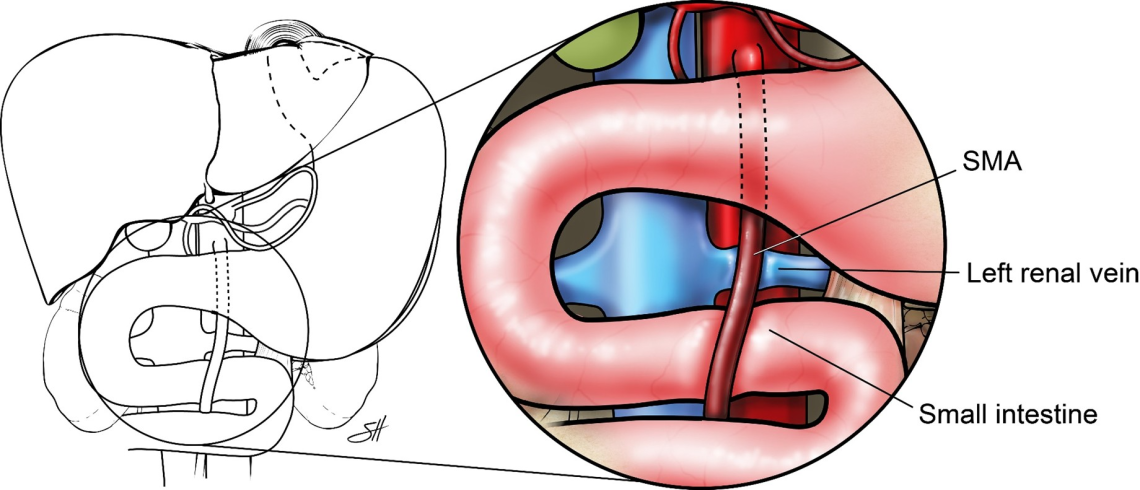Superior Mesenteric Artery Syndrome (SMAS) is a rare but serious condition that affects the digestive tract. It occurs when the third portion of the duodenum (part of the small intestine) becomes compressed between the abdominal aorta and the superior mesenteric artery. This compression can lead to chronic gastrointestinal symptoms and, if untreated, may result in severe malnutrition.
Causes of SMAS
SMAS typically develops due to a narrowing of the angle between the abdominal aorta and the superior mesenteric artery—called the aortomesenteric angle. Several factors can contribute to this narrowing, including:
- Rapid weight loss from surgery, restrictive diets or eating disorders
- Abdominal trauma or previous surgeries that alter internal anatomy
- Spinal abnormalities such as scoliosis or lordosis
- Tumors or masses in the abdominal region
- Prolonged immobilization in body casts or braces
SMAS Diagnosis
Diagnosing SMAS involves a detailed review of symptoms, medical history, and imaging studies. Common diagnostic tools include:
- CT scans or MRI to visualize the aortomesenteric angle
- Upper endoscopy to assess duodenal compression
- Barium swallow studies to evaluate gastrointestinal function
Treatment options for SMAS
Treatment for SMAS varies based on severity and the patient’s overall health. Options include:
- Nutritional support to restore weight and increase mesenteric fat padding
- Nasoduodenal tube placement to bypass the obstruction temporarily
- Surgical intervention if conservative treatments are unsuccessful. Common procedures include:
- Duodenojejunostomy: rerouting the intestine to bypass the compressed area
- Strong’s procedure: repositioning the duodenum to relieve compression
SMA Patient Story
How traveling to Houston healed Keri Carlson’s SMA Syndrome.








 Credit
Credit
